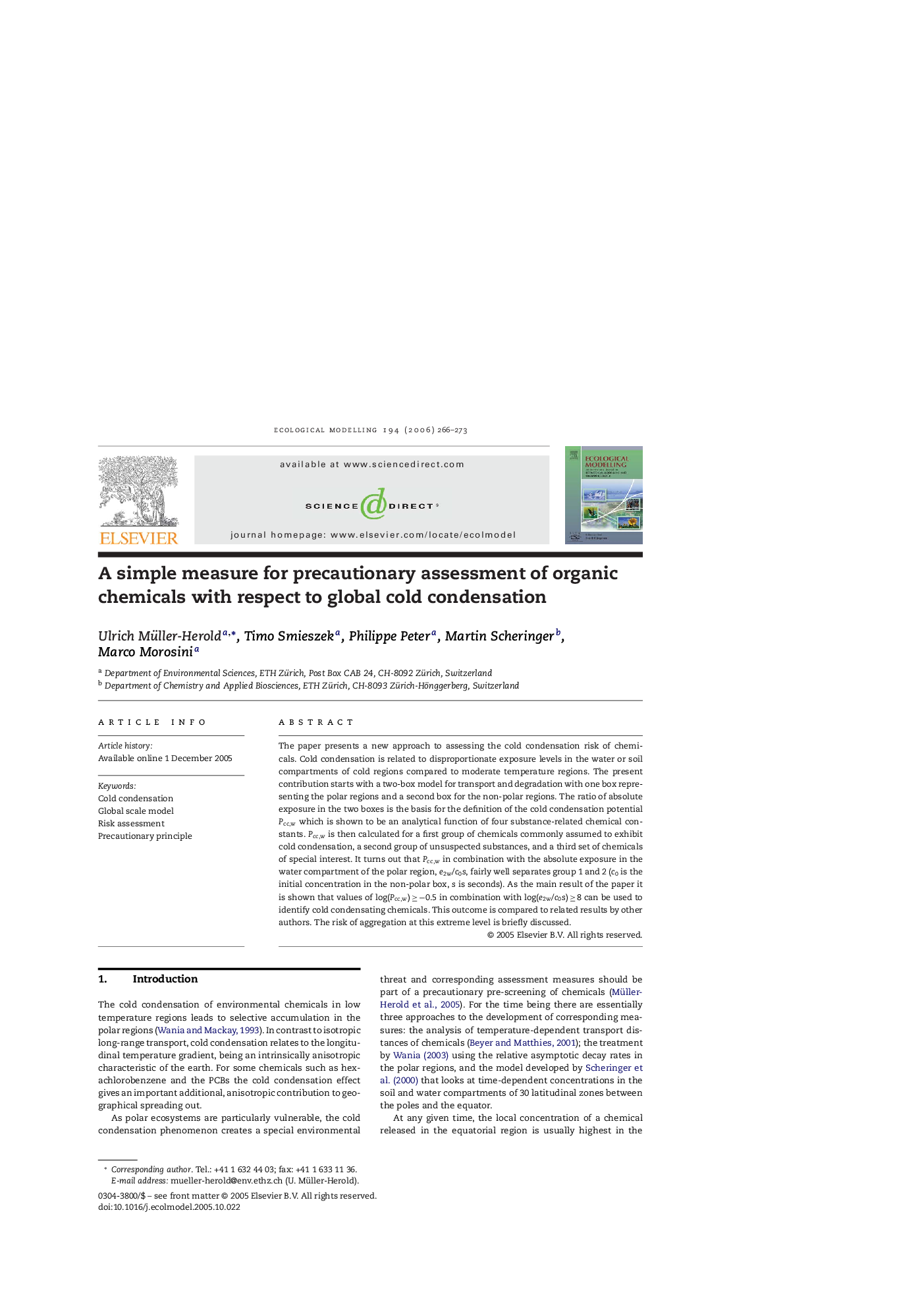| Article ID | Journal | Published Year | Pages | File Type |
|---|---|---|---|---|
| 4379199 | Ecological Modelling | 2006 | 8 Pages |
The paper presents a new approach to assessing the cold condensation risk of chemicals. Cold condensation is related to disproportionate exposure levels in the water or soil compartments of cold regions compared to moderate temperature regions. The present contribution starts with a two-box model for transport and degradation with one box representing the polar regions and a second box for the non-polar regions. The ratio of absolute exposure in the two boxes is the basis for the definition of the cold condensation potential Pcc,w which is shown to be an analytical function of four substance-related chemical constants. Pcc,w is then calculated for a first group of chemicals commonly assumed to exhibit cold condensation, a second group of unsuspected substances, and a third set of chemicals of special interest. It turns out that Pcc,w in combination with the absolute exposure in the water compartment of the polar region, e2w/c0s, fairly well separates group 1 and 2 (c0 is the initial concentration in the non-polar box, s is seconds). As the main result of the paper it is shown that values of log(Pcc,w) ≥ −0.5 in combination with log(e2w/c0s) ≥ 8 can be used to identify cold condensating chemicals. This outcome is compared to related results by other authors. The risk of aggregation at this extreme level is briefly discussed.
